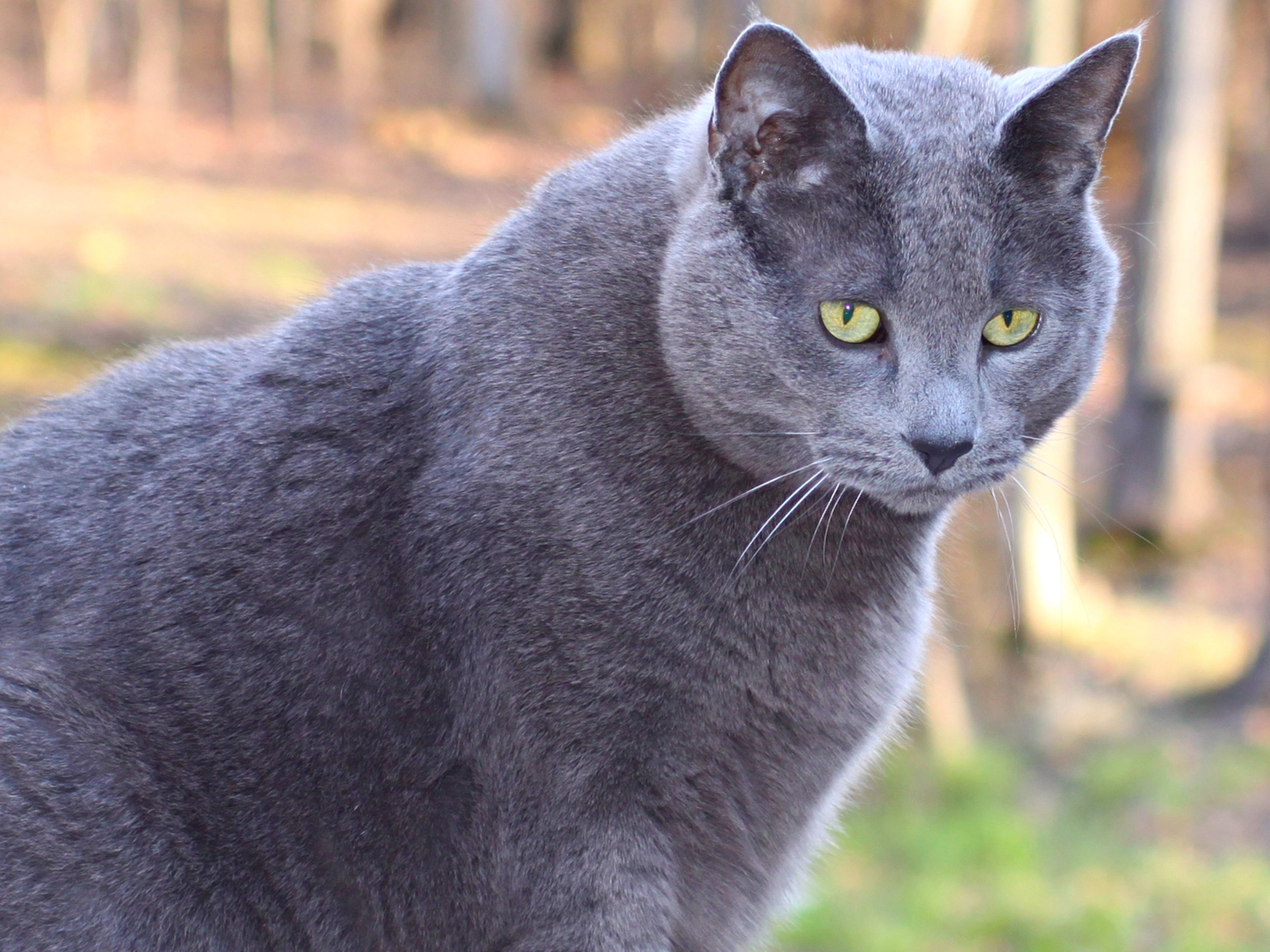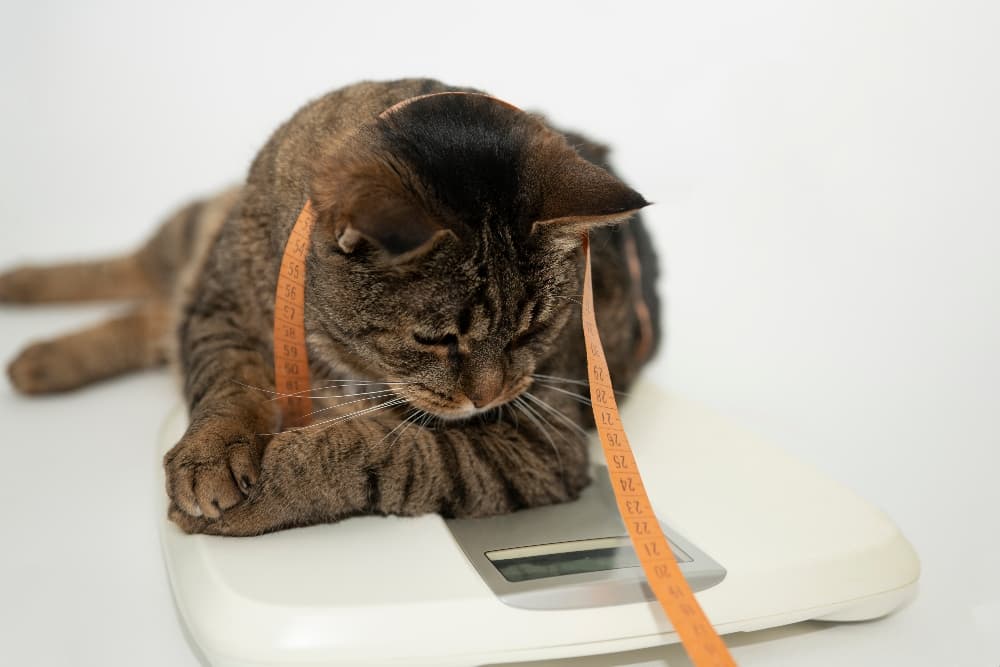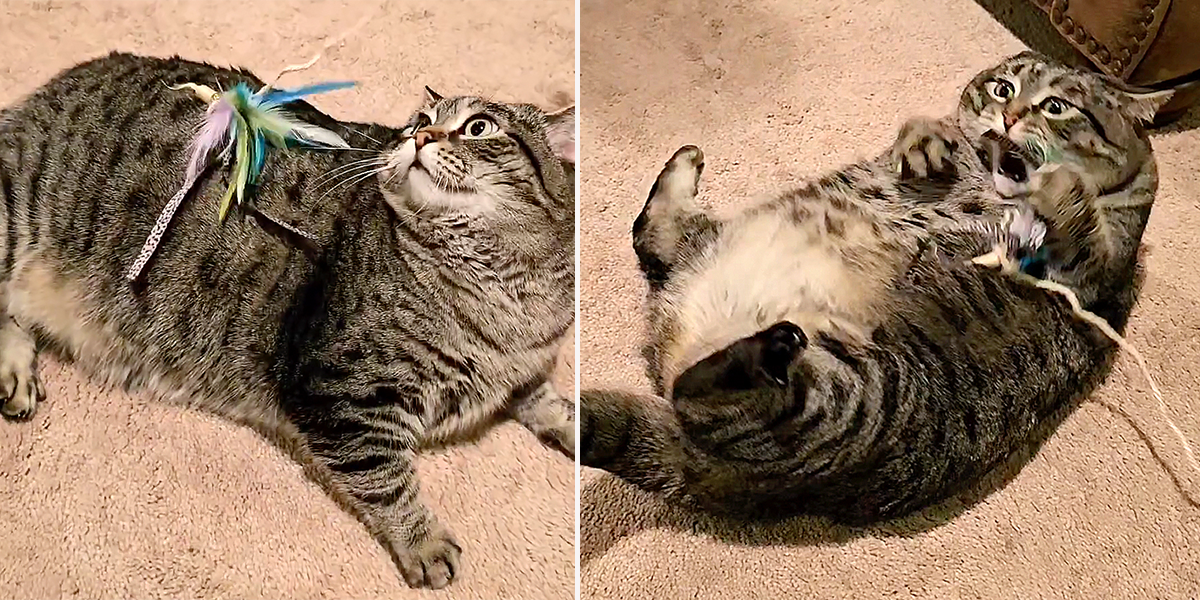Free Shipping On All Orders Over $150.
The Best Diet for Obese Cats
The best diet for obese cats is crucial in ensuring their long-term health and wellness. Obesity in cats can lead to various health complications, including diabetes, liver diseases, joint pain, and more. Addressing obesity requires a comprehensive understanding of its causes, symptoms, and effective dietary practices. This article will delve into the intricacies of feline nutrition, exploring ways to help your chubby companion achieve a healthier weight while still indulging in their cuteness.
Why Are Cats Becoming Obese?

In recent years, cat obesity has become an alarming trend among pet owners. While many adore those fluffy felines, it's essential to recognize that being overweight poses significant risks to their health.
Overfeeding and Lack of Exercise
One of the primary reasons for cat obesity is overfeeding combined with a lack of exercise. Pet owners often fall prey to the temptation of offering their cats additional treats or larger portions, underestimating the calorie intake versus the energy expenditure. Cats are naturally less active than dogs; without proper playtime and engagement, they tend to gain weight rapidly.
Moreover, the sedentary lifestyle that some indoor cats lead only exacerbates this situation. It's important for pet owners to be mindful of the quality and quantity of food given to their pets. Engaging in regular playtime can help mitigate weight gain by promoting activity.
Genetics and Breeds
Certain cat breeds are more prone to obesity than others due to genetic predispositions. Breeds such as Persians, British Shorthairs, and Ragdolls are more likely to pack on the pounds, making it vital for owners of these breeds to be particularly vigilant about their diet and exercise routines. Genetic factors can influence metabolism and appetite, adding another layer of complexity to addressing obesity in cats.
Age and Lifestyle Changes
As cats age, their metabolism slows down, and they may become less active. Changes in lifestyle, such as moving house or changes in family dynamics, can also affect a cat’s eating habits and activity levels. Older cats may require adjustments in their caloric intake to maintain a healthy weight. Understanding these changes is vital in combating obesity.
How to Identify an Obese Cat

Recognizing whether your cat is overweight can sometimes be challenging, especially if you view them daily. However, there are specific signs and methods for assessing your cat's weight.
Physical Assessment
A simple way to assess your cat's weight is through a physical examination. When looking at your cat from above, you should notice a distinct waistline between the ribs and hips. If this waistline is absent, your cat may be overweight. Additionally, feeling your cat's ribs can provide insights; you should be able to feel them without excessive pressure.
Behavioral Indicators
Obese cats might exhibit behavioral changes, such as lethargy or decreased interest in play. An overweight cat may also struggle with grooming, leading to matted fur or an unkempt appearance. Monitoring these behaviors can give clues about your cat's overall health and weight.
Consult a Veterinarian
For an accurate assessment, one of the best approaches is to consult a veterinarian. They can perform a thorough examination and provide insights based on your cat's unique body condition score (BCS). A vet can help you understand the degree of obesity and suggest a tailored plan for weight loss.
Diabetes and Obesity

Diabetes mellitus is a serious condition that can develop in obese cats. This metabolic disorder occurs when the body becomes resistant to insulin or fails to produce enough insulin to regulate blood glucose levels adequately.
Symptoms of Diabetes
Cats suffering from diabetes may show symptoms such as increased thirst, frequent urination, and unexplained weight loss. These symptoms may develop gradually, and early detection is key in managing the disease effectively.
Consequences of Untreated Diabetes
If left untreated, diabetes can lead to severe complications, including diabetic ketoacidosis, which is life-threatening. Managing diabetes in cats typically involves strict dietary adjustments, insulin injections, and regular veterinary check-ups.
Role of Diet in Managing Diabetes
The best diet for obese cats includes low carbohydrate and high-protein options, as these diets help stabilize blood sugar levels and promote healthier weight management. Feeding multiple small meals throughout the day can also prevent spikes in blood sugar.
Fatty Liver Disease

Fatty liver disease, or hepatic lipidosis, is a critical condition that can arise in overweight cats. It occurs when a cat's body begins to break down fat too quickly, resulting in excessive fat accumulation in the liver.
Causes of Fatty Liver Disease
One of the most common triggers for fatty liver disease is rapid weight loss. Even though weight loss is necessary for obese cats, it must be managed carefully to avoid jeopardizing the liver. If a cat refuses to eat or experiences sudden weight loss, they may be at risk.
Symptoms of Fatty Liver Disease
Symptoms include jaundice, vomiting, lethargy, and a decrease in appetite. Recognizing these signs early can significantly improve the prognosis.
Treatment and Prevention
Treatment usually involves nutritional support and possibly hospitalization for severe cases. To prevent fatty liver disease, it's essential to approach weight loss in a gradual and controlled manner, ensuring your cat receives adequate nutrition during the process.
Joint and Bone Vulnerabilities in Obese Cats

One of the major drawbacks of obesity in cats is its impact on their joints and bones. Excess weight places added stress on a cat’s skeletal system, potentially leading to joint pain and mobility issues.
Osteoarthritis
Osteoarthritis is a common condition in overweight cats, characterized by inflammation and degeneration of the joints. This painful condition can severely limit a cat's ability to move comfortably and engage in normal activities.
Early Signs of Joint Problems
Watch for changes in your cat's behavior, such as reluctance to jump or climb, limping, or excessive grooming in certain areas. These could indicate discomfort associated with joint issues.
Importance of Weight Management
Maintaining a healthy weight can significantly reduce the risk of joint problems in cats. Regular exercise, a balanced diet, and prompt attention to any signs of discomfort can help preserve their mobility and quality of life.
High Blood Pressure in Obese Cats

High blood pressure, or hypertension, is a hidden but serious concern for obese cats.
Risks Associated with Hypertension
Hypertension can lead to organ damage and increase the risk of heart conditions, strokes, and kidney failure. Unfortunately, many pet owners remain unaware of their cat’s high blood pressure until serious health issues arise.
Identifying Hypertension
Routine veterinary check-ups are essential for monitoring a cat’s blood pressure, especially if they are overweight. Signs may include changes in behavior, impaired vision, or other systemic symptoms.
Addressing High Blood Pressure
Managing blood pressure often requires dietary adjustments, weight loss, and sometimes medication. The best diet for obese cats plays a pivotal role in mitigating hypertension.
Skin Issues in Obese Cats
Obese cats are more susceptible to skin problems, which can stem from difficulty grooming and general health deterioration.
Grooming Challenges
Overweight cats may find it difficult to reach all areas of their bodies during grooming. This inability can lead to matting, itching, and skin irritations.
Increased Risk of Dermatitis
Obesity can contribute to various skin conditions, including dermatitis, which manifests as red, inflamed skin that may cause discomfort and further complications.
Importance of Hygiene
Regular grooming and hygiene maintenance become even more critical for obese cats. Owners should assist in brushing their cats and consider bath time to keep their coat healthy and reduce the risk of skin infections.
Nutritional Guidelines for Obese Cats
When it comes to formulating a diet for an overweight cat, several essential principles should guide your choices.
Consult Your Veterinarian
Before making any changes to your cat's diet, consulting a veterinarian is paramount. They can help establish a precise caloric requirement based on your cat's weight, age, and health needs.
Choosing the Right Food
Select foods specially formulated for weight loss or management. Look for options that are high in protein and fiber yet lower in calories. Ensure that the selected food meets a complete and balanced standard according to AAFCO guidelines.
Portion Control
Implement portion control by measuring food servings and distributing them across several smaller meals throughout the day. This method helps prevent overeating and encourages a more stable metabolic rate.
Exercise Routines for Obese Cats
Physical activity is just as important as dietary adjustments when addressing obesity in cats.
Gradual Introduction
It’s critical to introduce exercise slowly, especially for overweight cats who may have mobility issues. Begin with short play sessions using toys that encourage movement, such as feather wands or laser pointers.
Interactive Play
Encourage interactive playtime with your cat, as this not only helps to burn calories but also strengthens the bond between you and your furry friend. Rotating toys regularly can keep your cat entertained and engaged.
Outdoor Exploration
If possible, allowing your cat supervised outdoor time can stimulate their natural instincts to explore, hunt, and play, ultimately aiding in their weight management journey.
Important Considerations When Helping an Obese Cat Lose Weight
Weight loss in cats is a delicate process that requires patience and consistency.
Monitor Progress Closely
Keep track of your cat's progress by weighing them weekly or bi-weekly. This practice allows you to stay informed about the effectiveness of your diet and exercise regimen.
Stay Consistent with Meal Times
Establishing a routine for feeding times can help regulate your cat's hunger signals. Avoid free-feeding practices, which can lead to overeating.
Limit Treats and Snacks
While it's tempting to give in to your cat's pleading eyes, limiting treats will significantly aid in controlling their calorie intake. If you do wish to reward your feline friend, opt for healthy treat alternatives that align with their dietary goals.
Daily Meal Plans for Weight Loss in Cats
Creating a structured meal plan can facilitate successful weight loss for your cat.
Balanced Nutrition
A well-balanced meal plan should consist of high-quality protein, moderate fats, and select carbohydrates. Aim for a diet rich in nutrients to support overall health while promoting weight reduction.
Sample Meal Plan
Consider splitting your cat's daily caloric intake into smaller meals served throughout the day. For instance, providing three to four meals daily instead of two larger ones can prevent hunger pangs and encourage better digestion.
Adjustments Based on Activity Levels
Be prepared to adjust the meal plan based on your cat's activity level. If your cat is engaging more actively in play or exploration, minor increases in caloric intake may be warranted to support their energy expenditure.
Techniques to Assist Your Cat in Losing Weight
Ultimately, how you approach weight loss for your feline friend will determine their success.
Establish Goals
Set realistic weight loss goals for your cat, considering that healthy weight loss typically occurs gradually. Aiming to lose around 1% of their body weight per week is generally recommended.
Create a Supportive Environment
An environment conducive to weight loss is essential. Remove distractions like treat jars or food bowls that may tempt your cat to overindulge.
Celebrate Achievements
Celebrate small victories without the use of food. Providing affection, new toys, or extra playtime can reinforce positive behaviors and motivate your pet throughout their weight-loss journey.
Portion Control for Weight Loss in Cats
Understanding portion control is critical in catering to your cat’s weight loss needs.
Measure Food Accurately
Invest in a good kitchen scale or measuring cups to accurately portion your cat's food. Remember that different brands and types of food may vary in calorie content, so always refer to packaging for guidance.
Implement Feeding Techniques
Using puzzle feeders can add an element of fun to mealtime while encouraging slower eating habits. This technique not only promotes mental stimulation but also aids digestion.
Regular Review of Portions
As your cat loses weight, it may be necessary to adjust their caloric intake to ensure continued progress. Regular consultations with your veterinarian can help manage these changes effectively.
What Makes Chubby Cats Adorable?
Despite the potential health implications, many people find overweight cats irresistibly cute. Their round faces and plump bodies capture the hearts of cat lovers worldwide.
The "Cuddle Factor"
Fluffy felines evoke a sense of comfort and companionship that draws people in. Many associate their softness and cuddly appearance with warmth and affection, making their presence cherished in households.
Popular Culture Influence
Social media platforms have showcased numerous adorable chubby cats, propelling their popularity. With captivating images and videos circulating online, these cats capture the essence of cuteness, enhancing their appeal.
The Need for Awareness
However, it’s essential to balance the affection for these chubby companions with awareness of the health risks they face. Promoting responsible ownership and conscious care will help preserve their well-being while maintaining their charm.
Jiangmi – The Famous Cute Chubby Cat
Jiangmi, known for her rotund figure, has garnered massive popularity on social media. Her adventures and cute antics have captivated thousands of followers, showcasing the charm of overweight cats.
Social Media Stardom
Jiangmi's rise to fame illustrates how internet culture has embraced the adorableness of chubby cats. Her photos and videos resonate with cat enthusiasts, highlighting the uniqueness of each feline personality.
Interviews and Features
Various online platforms have featured Jiangmi, discussing her life as an oversized kitty and offering insights into her caretaking. Such narratives amplify the importance of pet health while celebrating their quirks.
Conclusion
The challenge of addressing obesity in cats extends beyond just dietary considerations; it encompasses a holistic approach that includes understanding underlying causes, recognizing health implications, and providing support for sustainable weight loss.
By implementing practical strategies, collaborating with veterinarians, and fostering a nurturing environment, pet owners can successfully help their feline friends shed excess pounds and embark on a healthier, happier life. Remember, the best diet for obese cats is one that promotes overall well-being, ensuring longevity and vitality while keeping their irresistible charm intact.
0 comment
Be the first to comment